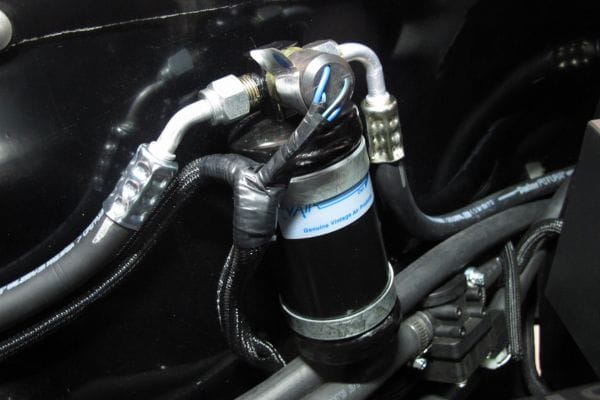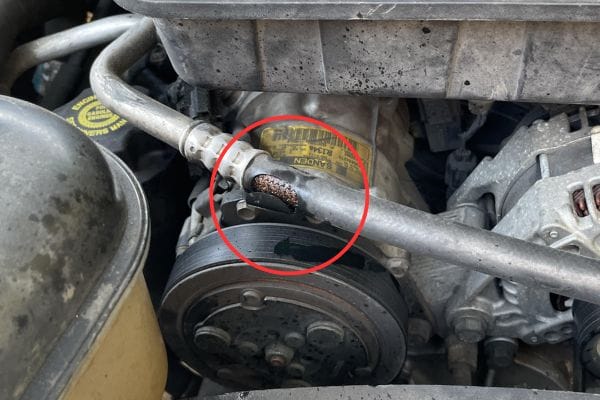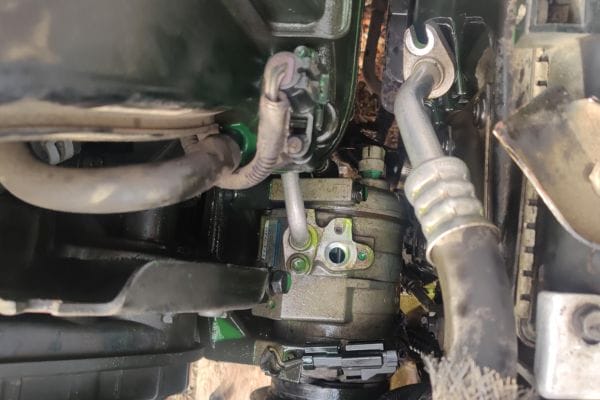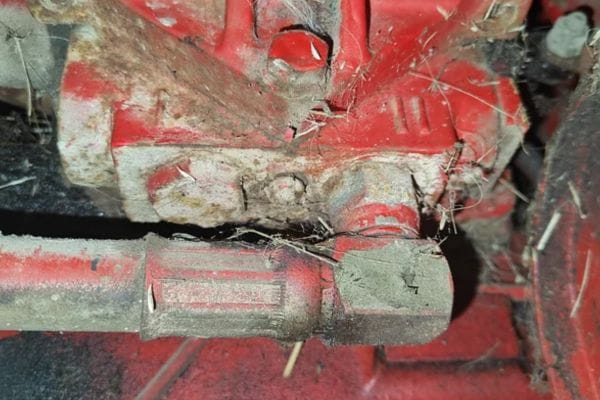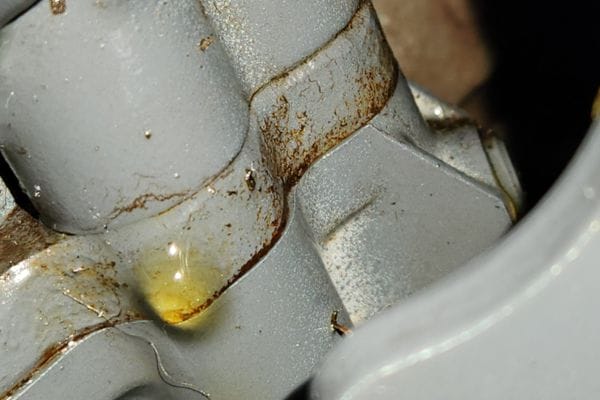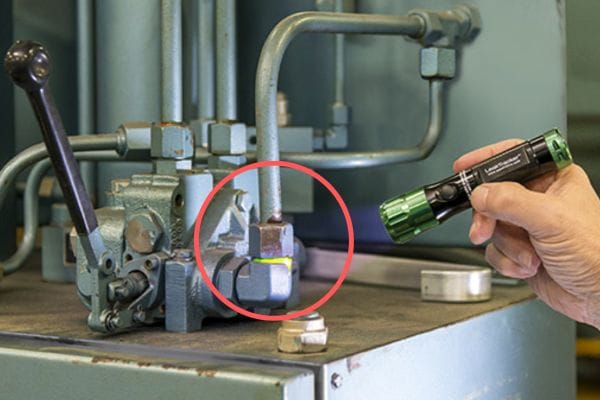Tri-clamps, also known as sanitary clamps, are essential components in a variety of industries where hygiene and efficiency are paramount. These fittings are commonly used in systems that require a high level of cleanliness, such as food and beverage processing, pharmaceuticals, and biotechnology. Tri-Clamps consist of three main parts: the clamp itself, a gasket, and a ferrule. Together, they create a secure, leak-proof connection between pipes and other components, ensuring smooth and uninterrupted flow.
Understanding Tri-Clamps
Definition and Purpose
A Tri-Clamp, also known as a sanitary clamp or tri-clover clamp, is a specialized fitting designed to provide a secure, leak-proof connection between pipes and other components in systems where hygiene and efficiency are critical. These fittings are particularly prevalent in industries such as food and beverage processing, pharmaceuticals, and biotechnology, where maintaining a sterile environment and ensuring seamless operation are paramount.
The primary purpose of a Tri-Clamp is to facilitate easy assembly and disassembly of pipe systems while ensuring a tight seal to prevent leaks and contamination. Tri-Clamps are essential for applications where regular cleaning, maintenance, or changes to the system are required. They allow for quick adjustments and replacements without the need for extensive downtime or complicated procedures, making them ideal for industries with stringent cleanliness standards.

Components and Construction
Main Parts: Clamp, Gasket, and Ferrule
A typical Tri-Clamp assembly consists of three main components:
Clamp: The clamp is the external part that wraps around the pipe and the ferrule, securing them together. It usually features a hinged design with a tightening mechanism, such as a screw or latch, that allows for easy adjustment and secure fastening. The clamp ensures that the ferrule and gasket remain in place, creating a tight seal.
Gasket: The gasket is a crucial component that provides the sealing function within the Tri-Clamp assembly. Made from materials like rubber, silicone, or PTFE, the gasket compresses between the ferrule and the clamp, creating a leak-proof barrier. The choice of gasket material depends on the application’s requirements, including temperature, pressure, and chemical compatibility.
Ferrule: The ferrule is a ring-like component that fits over the end of the pipe. It is designed to create a smooth, even surface for the gasket to seal against. The ferrule is typically made from stainless steel, which provides durability and resistance to corrosion. Ferrules come in various sizes and configurations to match different pipe diameters and application needs.
Materials Used and Their Implications
Tri-Clamps are commonly made from high-quality materials to ensure durability, reliability, and resistance to environmental factors. The most common materials used include:
Stainless Steel: This is the most prevalent material for Tri-Clamps due to its excellent resistance to corrosion, high temperatures, and mechanical stress. Stainless steel grades such as 304 and 316 are frequently used, with 316 being preferred for more demanding applications due to its superior resistance to aggressive chemicals and extreme conditions.
Rubber and Elastomers: Gaskets are often made from rubber or elastomers such as EPDM, silicone, or nitrile. These materials are chosen based on their ability to maintain flexibility, resist compression set, and withstand the specific temperature and chemical conditions of the application.
PTFE (Polytetrafluoroethylene): PTFE gaskets are used in applications requiring high chemical resistance and low friction. PTFE is known for its ability to handle extreme temperatures and aggressive chemicals without degrading.
The choice of materials in a Tri-Clamp assembly directly impacts its performance, longevity, and suitability for different applications. For instance, stainless steel Tri-Clamps are ideal for high-pressure and high-temperature environments, while PTFE gaskets are suited for chemically aggressive substances.
Tri-Clamp Sizing Basics
Standard Sizes and Dimensions
Tri-Clamps are available in a range of standard sizes to accommodate various pipe diameters and system requirements. The sizing is typically denoted by the nominal diameter of the pipe that the clamp fits around. Common sizes include 1.5”, 2”, 2.5”, 3”, 4”, 6”, and up to larger diameters depending on the application. Each size corresponds to a specific outer diameter of the pipe and ferrule, ensuring compatibility across different systems.
Overview of Standard Sizes:
1.5” Tri-Clamp: Often used in smaller systems or where space is limited. Suitable for smaller pipes and low-to-moderate flow applications.
2” Tri-Clamp: A versatile size for many standard applications, including medium-sized pipes and moderate flow systems.
2.5” Tri-Clamp: Provides a larger connection for systems requiring higher flow rates or slightly larger pipes.
3” Tri-Clamp: Commonly used in larger systems, providing a robust connection for higher flow and pressure applications.
4” Tri-Clamp and Larger: Used in industrial applications where large volumes of fluids are handled, requiring more significant connections and robust fittings.
Measurement Guidelines for Each Component
Pipe Diameter: To determine the appropriate Tri-Clamp size, measure the outer diameter of the pipe accurately. This measurement is crucial for selecting the correct ferrule size and ensuring a proper fit. Use calipers or a pipe measuring tape to obtain precise dimensions.
Ferrule Dimensions: The ferrule should match the outer diameter of the pipe it is connecting. Ensure that the ferrule’s outer diameter corresponds to the nominal size of the Tri-Clamp. The ferrule’s thickness and length also play a role in the overall fit, so measure these dimensions carefully.
Clamp Size: The clamp itself should be sized to fit around the ferrule and pipe combination securely. Ensure that the clamp’s inner diameter matches the ferrule’s outer diameter and that it provides adequate compression on the gasket to form a leak-proof seal.
Gasket Size: The gasket should be slightly larger in diameter than the ferrule’s outer diameter to ensure a proper seal. Measure the gasket’s inner and outer diameters to ensure it fits snugly between the ferrule and the clamp.
Choosing the Right Size
Selecting the correct Tri-Clamp size is essential for maintaining system efficiency and safety. Several factors should be considered:
Pipe Diameter: The most critical factor is the diameter of the pipe. Ensure that the Tri-Clamp size matches the pipe’s outer diameter and the ferrule’s size. This ensures a secure fit and prevents leaks.
System Pressure: Different applications require different pressure ratings. Ensure that the selected Tri-Clamp can handle the system’s pressure requirements. Higher-pressure systems may require larger clamps or additional support to maintain integrity.
Flow Requirements: The size of the Tri-Clamp affects the flow rate through the system. Larger clamps allow for higher flow rates, while smaller clamps are suited for lower flow applications. Ensure that the chosen size meets the flow requirements of your system without causing restrictions or flow issues.
Compatibility with Other Components: Ensure that the Tri-Clamp size is compatible with other components in the system, such as hoses, valves, and fittings. Proper alignment and compatibility are essential for a functioning system.
Material Considerations: The material of the Tri-Clamp should match the requirements of the application. For example, stainless steel is ideal for high-pressure and high-temperature applications, while other materials may be suitable for less demanding environments.
Application-Specific Requirements: Different industries have specific standards and requirements for Tri-Clamp sizing. For instance, the food and beverage industry may have specific sanitary standards that must be met. Ensure that the Tri-Clamp size and material meet these industry standards.
Common Sizing Mistakes and How to Avoid Them
Overlooking Tolerances
Importance of Accounting for Tolerances in Manufacturing
When selecting Tri-Clamps, it’s crucial to consider manufacturing tolerances. Tolerances refer to the allowable variations in dimensions due to the manufacturing process. These variations can affect the fit and function of Tri-Clamps, potentially leading to issues such as leaks or improper seals.
Manufacturers produce Tri-Clamps to specific standards, but even with precise manufacturing, slight variations can occur. For instance, the outer diameter of a pipe may vary slightly from its nominal size due to tolerances in the pipe’s production. Similarly, ferrules and gaskets are subject to tolerances that can impact their fit within the clamp assembly.
To avoid issues arising from tolerances, ensure that your measurements are as precise as possible. Always account for these variations when selecting your Tri-Clamp size. It’s also advisable to use clamps and gaskets from the same manufacturer to ensure compatibility, as different manufacturers may have slightly different tolerances.

Incorrect Measurements
Common Errors in Measuring and How to Correct Them
Accurate measurements are fundamental to selecting the right Tri-Clamp size. Common measurement errors include:
Using Incorrect Tools: Using inappropriate measuring tools can lead to inaccurate dimensions. Ensure you use calipers or a pipe measuring tape for precise measurements. Avoid using tape measures that are not designed for this purpose, as they may provide less accurate results.
Measuring Pipe Diameter Incorrectly: When measuring the outer diameter of a pipe, ensure you measure at multiple points around the pipe to account for any irregularities. Pipes can sometimes have slight variations in diameter, so measuring at several points helps ensure accuracy.
Ignoring Pipe Wall Thickness: The wall thickness of the pipe can affect the overall size of the Tri-Clamp required. Ensure that you measure the pipe’s outer diameter accurately, including its wall thickness, to select the correct clamp and ferrule size.
Not Measuring Ferrule and Gasket Sizes: Ensure that you measure both the ferrule and gasket accurately. The ferrule’s outer diameter should match the clamp’s inner diameter, and the gasket should be sized appropriately to fit snugly between the ferrule and clamp.
To correct these errors, use precise measuring instruments, measure multiple times to confirm accuracy, and consult sizing charts or guidelines provided by manufacturers. If in doubt, consult with a professional or manufacturer for assistance.
Choosing Incompatible Sizes
Risks of Using Mismatched Tri-Clamp Sizes
Using mismatched Tri-Clamp sizes can lead to several risks and issues:
Leaks: Mismatched sizes can result in gaps between the ferrule and clamp or between the gasket and ferrule. This can cause leaks, which can lead to contamination, loss of fluid, and potential safety hazards.
Reduced System Efficiency: An incorrect size can cause restrictions or blockages in the system, affecting flow rates and overall efficiency. This can result in decreased performance and potential damage to the system.
Increased Maintenance Costs: Using incompatible sizes may lead to frequent maintenance and repairs. Leaks and inefficiencies can cause additional wear and tear on the system, increasing maintenance costs and downtime.
Safety Hazards: In systems handling hazardous or high-pressure fluids, using the wrong size Tri-Clamp can pose safety risks. Leaks or system failures can lead to dangerous conditions for operators and damage to equipment.
To avoid these risks, always ensure that the Tri-Clamp size matches the pipe and ferrule dimensions accurately. Verify that all components, including the clamp, ferrule, and gasket, are compatible and correctly sized for the application. Consulting with suppliers or manufacturers for guidance on sizing and compatibility can also help prevent issues.
Tri-Clamp Sizing for Different Applications
Food and Beverage Industry
Specific Requirements and Standards
In the food and beverage industry, maintaining sanitary conditions is paramount, making the correct sizing and selection of Tri-Clamps critical. This industry requires fittings that can withstand frequent cleaning, high temperatures, and exposure to various chemicals, all while preventing contamination. The key standards that govern the use of Tri-Clamps in this industry include the 3-A Sanitary Standards and the FDA (Food and Drug Administration) regulations.
3-A Sanitary Standards: These standards are designed to ensure that equipment used in food processing is cleanable, corrosion-resistant, and safe for contact with food. Tri-Clamps used in the food and beverage industry must comply with these standards, which specify requirements for material, surface finish, and ease of cleaning. Typically, 316L stainless steel is preferred due to its superior corrosion resistance and ease of cleaning.
FDA Compliance: All materials in contact with food or beverages must be FDA-approved. This includes not only the Tri-Clamp but also the gaskets and seals. Silicone and PTFE gaskets are commonly used because they meet FDA requirements for food safety.
Correct Sizing: The correct sizing of Tri-Clamps in the food and beverage industry is crucial to maintaining product integrity. Oversized or undersized clamps can lead to leaks, contamination, or inefficient cleaning processes. Properly sized Tri-Clamps ensure a tight seal, prevent bacterial growth, and allow for thorough cleaning and sanitization.

Pharmaceuticals and Biotech
Sanitary Considerations and Compliance
In the pharmaceutical and biotech industries, the need for sterility and contamination control is even more stringent. Tri-Clamps used in these applications must meet rigorous standards to ensure that they do not compromise the safety or efficacy of the products being processed.
USP Class VI Compliance: The materials used in Tri-Clamps, especially the gaskets, must meet USP Class VI standards. This certification ensures that the materials are biocompatible and do not leach harmful substances into the product. PTFE and EPDM are common gasket materials that meet these requirements.
BPE (Bioprocessing Equipment) Standards: The ASME BPE standards specifically address the requirements for equipment used in bioprocessing and pharmaceutical manufacturing. Tri-Clamps must meet these standards, which include stringent requirements for surface finish, material, and cleanability. A surface finish with a roughness average (Ra) of 20 microinches or better is often required to minimize the risk of bacterial adhesion.
Correct Sizing: In pharmaceutical and biotech applications, precise sizing is critical to maintaining a sterile environment. Incorrectly sized clamps can create crevices where contaminants can accumulate, leading to product contamination. The correct Tri-Clamp size ensures a secure, leak-proof connection that is easy to sterilize and maintain.
Other Industries
Chemical Processing: In chemical processing, Tri-Clamps are used in systems that handle aggressive chemicals, high pressures, and extreme temperatures. The sizing of Tri-Clamps in this industry must account for these factors to ensure that the fittings can withstand the operating conditions without failing. In many cases, larger clamps made from specialized materials like Hastelloy or Monel may be required.
Dairy Industry: Similar to the food and beverage industry, the dairy industry requires Tri-Clamps that meet sanitary standards. However, the sizing in dairy applications often involves larger diameter pipes to handle the high flow rates needed for milk and other dairy products. The correct sizing ensures that the system can handle the volume without compromising on cleanliness or efficiency.
Brewing and Distilling: In brewing and distilling, Tri-Clamps are used to connect equipment like fermenters, stills, and transfer lines. The sizing must accommodate the specific needs of the process, such as high flow rates and temperature changes. Stainless steel Tri-Clamps with appropriate gaskets are commonly used to ensure durability and a proper seal in these applications.
Water Treatment: Tri-Clamps are also used in water treatment systems, where they connect pipes and components involved in filtration, chemical dosing, and other processes. The sizing requirements in this industry vary based on the system design and the types of fluids being handled. Properly sized Tri-Clamps help maintain the integrity of the water treatment process, ensuring that there are no leaks or contamination.
Conclusion
For accurate Tri-Clamp sizing, always ensure precise measurements and account for manufacturing tolerances. Verify that the sizes of clamps, ferrules, and gaskets match the dimensions of the pipes and fittings they connect. Consider the specific needs of your application, including pressure, flow rates, and regulatory standards, to choose the appropriate size and material. For complex requirements or uncertainties, don’t hesitate to consult with experts or refer to additional resources.
FAQ
What is a Tri-Clamp?
A Tri-Clamp is a type of sanitary fitting used to connect pipes and equipment in industries like food and beverage, pharmaceuticals, and biotech. It consists of a clamp, a ferrule, and a gasket to ensure a secure, leak-proof connection.
How do I measure for the correct Tri-Clamp size?
Measure the outer diameter of the pipe and the ferrule accurately. The Tri-Clamp size should match the ferrule’s outer diameter, and the gasket should fit snugly between the ferrule and clamp.
What materials are Tri-Clamps typically made from?
Tri-Clamps are commonly made from stainless steel (like 316L) for durability and corrosion resistance. Gaskets can be made from materials like silicone, PTFE, or EPDM, depending on the application.
Why is correct sizing important for Tri-Clamps?
Correct sizing ensures a proper fit, prevents leaks, maintains system efficiency, and meets regulatory standards. Incorrect sizing can lead to leaks, contamination, or system inefficiencies.
How can I avoid common sizing mistakes?
To avoid mistakes, use precise measuring tools, account for manufacturing tolerances, and ensure compatibility of all components. Double-check measurements and consult manufacturer guidelines if needed.
When should I consult with an expert for Tri-Clamp sizing?
Consult an expert if you have complex requirements, face difficulties in measurement, or need to ensure compliance with industry-specific standards.



